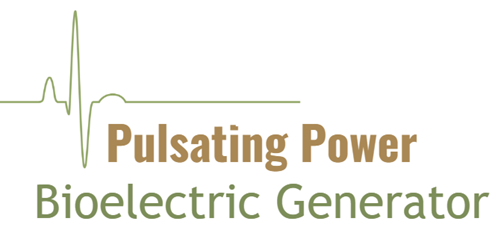Piezo Electric Testing
Before we decided to use solar panels as our charging method, we did some testing with piezoelectric.

Decision Matrix
Throughout our literature research, we found several charging methods that could be used for our engineering design, and then we narrowed it down to our best two options, piezoelectric and solar energy.
We need to determine the best charging method for our rechargeable pacemaker. For this process, we used the analytical hierarchy process, which can be an effective tool to compare alternative solutions; criteria for comparison are selected, and the relative weights of the criteria are assigned.
The criteria we used for the charging method are:
Cost
Power
Design
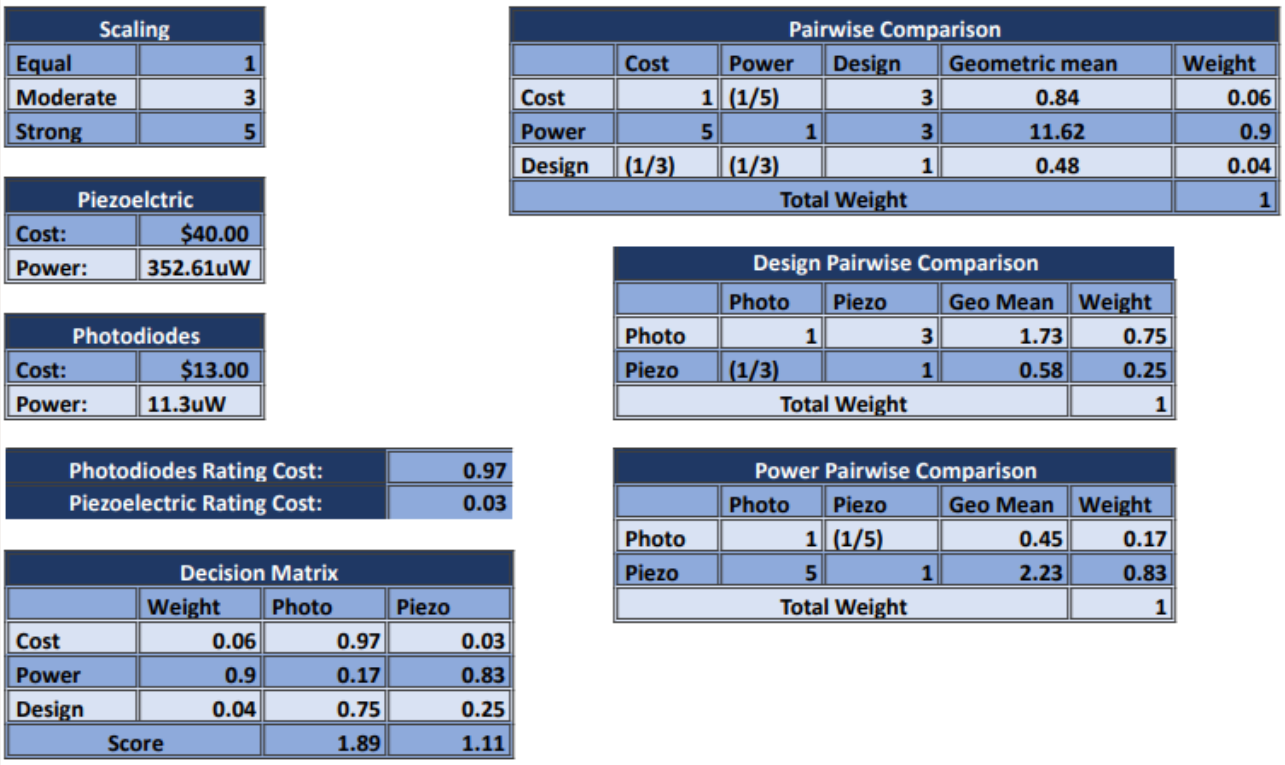
We can see that piezoelectric is very expensive. One-unit costs 40 dollars and produces around 352.61 microwatts. Then photodiodes cost approximately 1.3 dollars each, and we need about ten photodiodes to produce approximately 11.3 microwatts.
Photodiodes are much smaller, they have more room for flexibility and adaptability, so we made the design scale more significant than the design of the piezoelectric.
The decision matrix was used to decide which charging method would be used for our design process. Taking a closer look at the decision matrix table below, we can see those photodiodes have a higher score than piezoelectric, not to mention those photodiodes produce a more constant charge than the other charging method.
Power Generation Measurement
The basic principle of solar power generation is quite complex. Sunlight shines on the semiconductor p-n junction, forming a new hole-electron pair, and under the action of the electric field built into the p-n junction, holes flow from the n-zone to the p-zone, and electrons flow from the p-zone to the n-zone, forming an electric current when the circuit is connected.
Our first test in the design process was done with the BPW34 photodiode. First, we tested the power generation efficiency of the photodiode under different lighting conditions, including a well-lit room, a poorly lit room, and sunny outside. The measurement consisted of a single photodiode and 10 photodiodes connected in series.
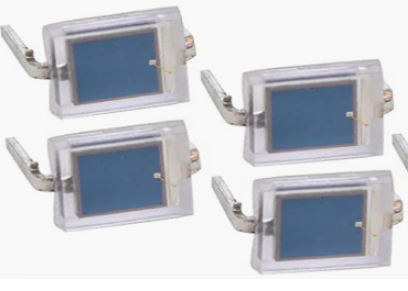

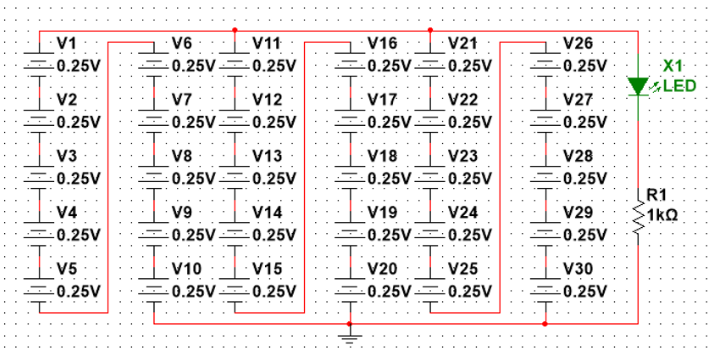
With the original individual measurements and series measurements, we simulated through Multisim to connect multiple power sources in series and parallel and observed the output results.

Photodiode Array Prototype
Now this semester we decided to get some solar cells instead of using small photodiodes. We began doing some testing and collecting measurements to see our power generation efficiency.
First we measured a single solar panel and in a normal light situation and for voltage we got 3.1 volts and for current 0.211 milliamps, with an output power of 0.5 milliwatts. Then we put the solar panel on direct light and for voltage we got 4.2 volts and 0.452 milliamps producing an output power of 1.89 milliwatts.

Solar Panel Testing Measurements
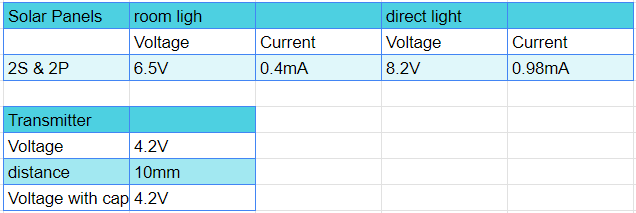
2 Series/2Parallel Solar Panels & Transmitter
One solar panel is way better than the ten photodiodes in series we did last semester, however, it is still not enough to charge a 1000Ah battery. So we decided to increase the power by using four solar panels, two solar panels in series and two solar panels in parallel, this doubled our measurements. With our two series and two parallel panels we got an output power of 3.25 milliwatts on room light.
If you wish to see more of our testing plan and actual testing, please go to our testing section under documentation.
